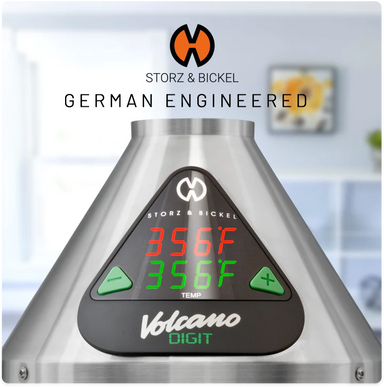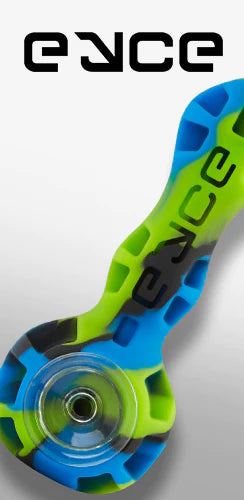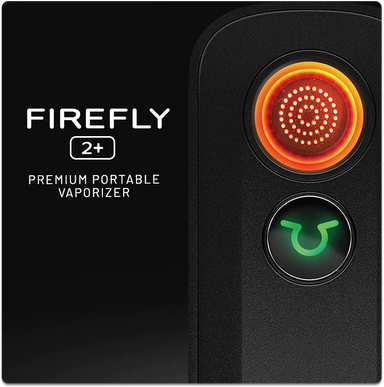Always on the cutting edge of technology, the vaporizer community continues to expand on the way users consume dry herb or concentrates. The earliest vaporizers were basic conduction style devices, where your dry herb would be placed directly on the heating element for rapid vaporization. At the time, this technology was mind-blowing, and tons of “box-style" desktop vapes that could easily be mistaken for old-timey radios started popping up on dorm room coffee tables.
While these models are still quite popular today, it was obvious to users that due to inefficiencies in the way the material is heated and what is left behind, conduction heating was a wasteful way to enjoy dry herb or concentrates. Soon after conduction units proliferated, convection hit the scene. Vaporizing material with hot air instead of hot surfaces made convection vaporizers the go-to option for users who wanted more flavor and effects from their preferred substance. Convection is now considered the “better” option over conduction, but a new challenger is on the scene to vie for the title of “best heating method." Get ready for induction powered vaporizers!
WHAT IS INDUCTION?
While there are only a few (like, literally 2) induction vaporizers out currently, it shouldn’t be long before this technology gets better utilized for the vaporizer world. Induction heating is the process of heating an electrically conducting object (usually a metal one) through heat generated in the object by eddy currents. The critical aspect of induction heating as it relates to vaporizers is the fact that the heat is generated inside the object itself, instead of an external heat source, meaning there is absolutely NO contact with a heat source during induction vaporization. So now that you’ve got a quick science lesson, you’re probably asking yourself…
WHAT IS AN INDUCTION VAPORIZER?

While it seems like a complicated form of heating, induction is relatively simple.
At vapor.com we carry the Dr. Dabber SWITCH, the first desktop induction vaporizer. Dr. Dabber engineered the SWITCH with an induction coil at the top of the unit, which works with the included induction cups. The coil heats the cup, which contains your material, using a magnetic field. The biggest hurdle for induction vaporizers is going to be the placement and size of the coil. You need something small enough for easy use, but big enough to contain a decent amount of material. With the SWITCH, the coil is housed at the top of the unit and the cups are placed inside. This form seems to be the most “logical” way for desktop induction vaporizers to operate.
Dr. Dabber’s design creates a vaporization environment that has little to no oxygen inside of it, meaning that at higher temperatures your dry herb can heat over the point of combustion without combusting. This ultra-heating extracts 100% of the terpenes from your dry herb while leaving all the harmful parts in the cup. The induction coil is covered by a carb cap, making the area air-tight. The lack of oxygen is what prevents combustion and oxidation of your vapor compounds while still giving smooth draws with less waste.

The included induction cups help to save overall costs since they eliminate atomizers.
Some readers might notice that I haven’t mentioned any atomizers yet. Thanks to this application of induction heating there are no atomizers that need to be replaced, just the induction cups. By eliminating the need for atomizers, the SWITCH has made desktop vaping that much easier. Most of us have broken or lost an atomizer at some point in time, so having this cost-saving feature is excellent for users who might consider themselves clumsy or absent-minded. The induction cups help to accelerate the heat up process as well. During preheating, most temperatures only take around five to twelve seconds to heat up.
The newest trend in induction vaporizers involves the versatile products from DynaVap Vaporizers. DynaVap induction heaters are a lot smaller than the Dr. Dabber SWITCH, and offer a much more convenient way to enjoy smooth vapor. Just like the SWITCH, a DynaVap induction heater does not need an atomizer, as the cap of the DynaVap holds your dry herb, and is then inserted into the induction heater. It takes just around 10 seconds for the induction heater to get to temperature for the DynaVap, which might technically make them the fastest "desktop" vaporizers available.
WHAT IS THE FUTURE OF INDUCTION VAPORIZERS?
As of now we only have the SWITCH and DynaVap induction heaters to go by regarding “how an induction vaporizer works,” so let us assume that the induction cups and extra device aspect (for DynaVap products) are going to be the preferred method of housing dry herb and concentrates. The cups are designed to create a perfectly even surface temperature that eliminates the dreaded “hot spots” some atomizers can succumb to and provides consistent flavor for the entirety of your session, and the DynaVape induction heaters are so efficient you will get a tasty draw each time. In regards to the SWITCH, the electronics are entirely separate from the vaporization area, which makes this unit leak-proof. There are also no electrical connections to the heating element that can wear down over time.
The lightning-quick heat up time of the SWITCH and DynaVap induction heaters is unmatched by any other vaporizer out there, and any other induction vapes that enter the market will have similar specs when it comes to their heat up time. Induction vaporizers have already cemented themselves as the “fastest to heat up”, so it will be interesting to see what a company can do to accelerate this process even more. The Dr. Dabber SWITCH has a pretty large battery but can fully charge in just 60 minutes. It is also equipped with “pass-through” technology so even during this 60-minute charge time, you can use it. When it comes to moving between temperatures, induction vapes are fantastic as they can go from temp-to-temp quickly and precisely.

The SWITCH's battery makes up almost half of its total weight.
The biggest hurdle for a company making an induction vape seems to be battery power. On-the-go induction vaping kind of gives me a headache when thinking about how it would be constructed given how large the SWITCH’s battery is. Cost is another big issue. The Dr. Dabber SWITCH is on the higher-end, which given the grand scheme of things in the desktop vaporizer world, it's still cheaper than a Volcano. While cost seems to not be a deterrent for desktop vapes, making an affordable portable vape that utilizes induction heating is going to be a big challenge.
Portable vaporizer users are used to spending less than their desktop-using friends, but the only handheld induction vape currently available for pre-order is the same price as the SWITCH. Moreover, the size of this portable is comically large for a “portable vape." From what I gather, it's about the size of a fitted hat’s bill, which is large enough to draw attention to the user if they were trying to use it in public. Desktop vaporizers seem primed to take advantage of this technology since size isn’t that big of an issue for those users. With only one "true desktop" model out, every other iteration of an induction vape will be measured against the Dr. Dabber SWITCH. The DynaVap induction heater situation is so unique there really is no comparison to it, some users make their own induction heaters but we can't suggest that as it does seem a little dangerous without a fair amount of knowledge about the process.
Safety-wise, the SWITCH is a top-tier vape. The induction coil seems a little “in your face”, especially when you realize it can get up to 800°F for its “cleaning mode." But the coil itself cannot fire unless an induction cup is inside of it. Induction heating itself is very safe. Induction stoves can have their burners put on high, and if no metal pot or pan is on the burner, you can actually plant your hand right on the burner with no risk of injury.
FINAL THOUGHTS ON INDUCTION VAPORIZERS

Induction coils could be the new norm if their size can be conquered.
If the Dr. Dabber SWITCH and DynaVap induction heaters are anything to go by, the future of induction seems bright. The speed at which induction vaporizers heat up is unmatched; users won’t ever have to wait more than 20 seconds for either their dry herb or concentrate to be ready to vape. While heat up speed isn’t necessarily the most important factor for vape users, desktop vapes that can heat up this quickly will always be preferred to those that take awhile. Induction heating allows for extremely even vaporization as well, so users can be confident that they’re consuming 100% of the favorable properties of their dry herb or concentrates. Dr. Dabber gave the SWITCH 25 heat settings for both dry herb and concentrate use, which will satisfy flavor seekers and cloud chasers alike. Any upcoming induction vapes will have to match this level of performance should they want to compete.
The pluses of induction vaporizers are wonderful. The only downside I can identify is battery size, and the fact that if you're a DynaVap induction user you have to have an extra device. The SWITCH has a beastly battery, which also happens to take up almost half of the vaporizer’s total weight and structure. Induction heating seems to lend itself to desktop vaporizers as a large amount of power is needed to adequately run the vaporizer (at least in this case). If a company can figure out a way to get induction heating into a portable unit, be it an enail or pen, they will run away with a large share of the vape market. Even heating of dry herb or concentrates, a safer way to induce heating, and wide temperature ranges make induction heating the future of vaporization. The real question is, can manufacturers fit this technology into a more portable unit to allow it to permeate a large portion of users?




